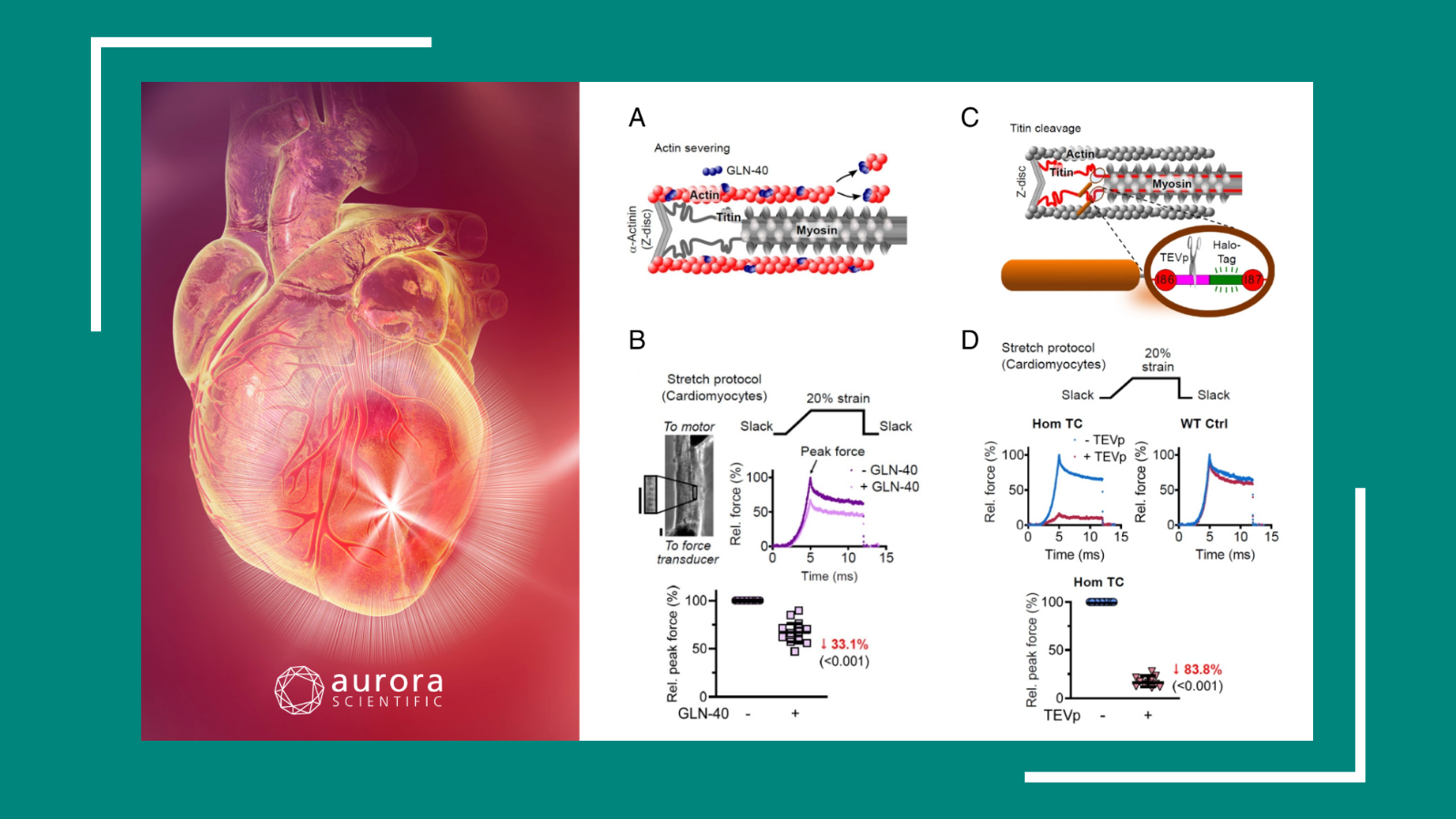Animal models provide a plethora of opportunities to study muscle function. This variety requires instrumentation to help measure the function of muscle in different animals. Aurora Scientific provides instrumentation to aid in collecting and analyzing data in numerous animal models highlighted in some recent publications in this review.
Featured image (© Bustamante et al., licensed under CC BY) showcases the attachment of an insect abdomen to the Dual-Mode Lever System from Aurora Scientific.
The Mechanical Properties of the Mantle Muscle of European Cuttlefish (Sepia officinalis)
Muscular contraction is key for locomotion and for cephalopods, jet propulsion swimming is powered by mantle muscles that contract to expel water via the siphon and generate thrust. The mantle muscle has layers that are analogous to vertebrate fast- and slow-twitch fibers known as “central mitochondrial poor” and “superficial mitochondria rich.” To characterize the muscle, previous studies have been limited to isometric and isotonic contractions in certain adult cephalopods. Jet propulsion swimming involves contractions that undergo cyclical length changes, which is different from the traditional behaviours of isometric and isotonic contractions. Gladman and Askew aimed to determine contractile properties of mantle muscle in cuttlefish during these cyclical contractions as well as understand these differences in adults versus juveniles; something not previously observed in studies to date.
The authors found that cyclic conditions, power and cycle frequency had an inverted U-shaped relationship in both adults and juveniles, with max power shifting to lower cycle frequencies as age increased. To do this, muscle was attached to our 300B-LR Dual-Mode Lever System which enabled the authors to characterize the mechanical properties in-vitro. The authors noted the similarities with vertebrate species that also exhibit net power output as an inverted U-shaped relationship with cycle frequency where peak power was at maximum at a mid-range cycle frequency. The authors also observed how peak power was maximized during jet propulsion swimming, likely due to the fact that jet propulsion is important for escaping predation when camouflage fails.
The Road Not Taken: Evolution of Tetrodotoxin Resistance in the Sierra Garter Snake (Thamnophis couchii) By a Path Less Travelled
To avoid becoming a predator’s next meal, or to capture prey, many animals are in an evolutionary competition to gain advantage over one another to ensure survival. Tetrodotoxin (TTX) is a poison used to paralyze or kill predators, and TTX-bearing newts (Taricha) ensure their survival by using TTX as a defence. TTX blocks voltage-gated sodium channels (Nav) in muscles and nerves, thus paralyzing or killing the predator. However, garter snakes have developed TTX resistance to prey upon the newts by replacing Nav residues that interact with TTX. Reimche et al. sought to determine mechanistic convergence in garter snakes at the organ level scale and at the gene-specific scale.
Geography plays a role in the development of the TTX-resistance adaptation as the authors determined by observing physiological and genetic variations across species range. Resistance at these levels is correlated however, the authors also found that no functional variation in Nav loci was found among populations nor where differences found in gene expression. The authors used our 800A/805A: in-vitro Muscle Apparatus and 610A Dynamic Muscle Control software in order to measure TTX resistance in garter snake skeletal muscle. It may be that evolution of toxin resistance is not consistent between different levels of organization; convergence at the surface level does not always mean convergence at the genetic level. Other evolutionary paths may exist through physiological, developmental, or genetic routes.
Abdominal Movements in Insect Flight Reshape the Role of Non-Aerodynamic Structures for Flight Maneuverability I: Model Predictive Control for Flower Tracking
The movement of wings in order to generate lift is often the focus of current research into animal flight. Though not much focus has gone into other body segments that may also contribute to flight. Other studies observed how locomotion also involves tail movements and spinal twists. For insects, abdominal deflections may be able to influence flight dynamics which is what Bustamente et al. sought to determine. The abdomen accounts for a large proportion of body mass in many insects, and previous work found that abdominal undulations, flexion, and extension all contribute to control and greater stability during insect flight.
The authors of this article developed a model to track movement and determine how much the movement of the abdomen contributes to flight. To do this the abdomen of a Hawkmoth was attached to our 300C Dual-Mode Lever System. Our equipment enabled the authors to apply oscillations and record the torque exerted back on the lever arm which simulated the movements that would occur during flight. They restricted one group of moth abdomens from free movement versus free flight in live hawkmoths and found that abdominal motions are an important contributor to flight control. The restricted abdomens performed worse as a result of having a carbon fiber rod attached to the thoracic-abdomen joint. Despite the fact that the abdomen is not aerodynamic or directly involved in the generation of lift, it appears that it is still an important factor in dynamics of flight.




